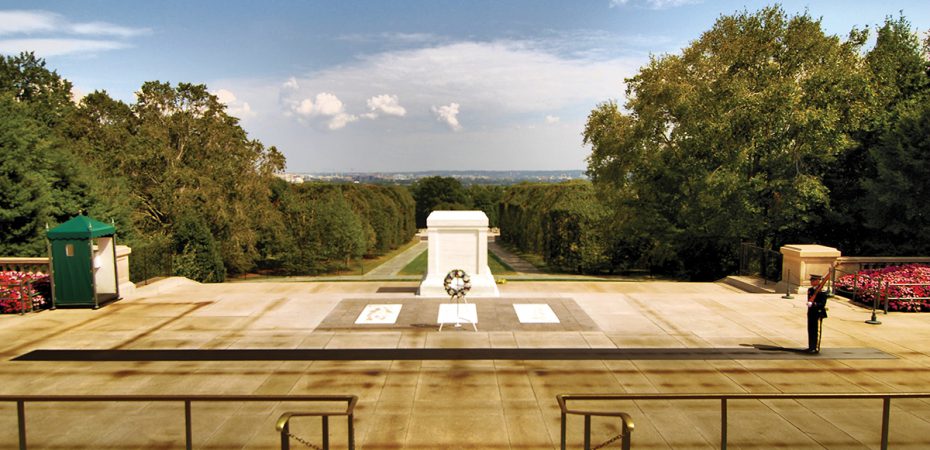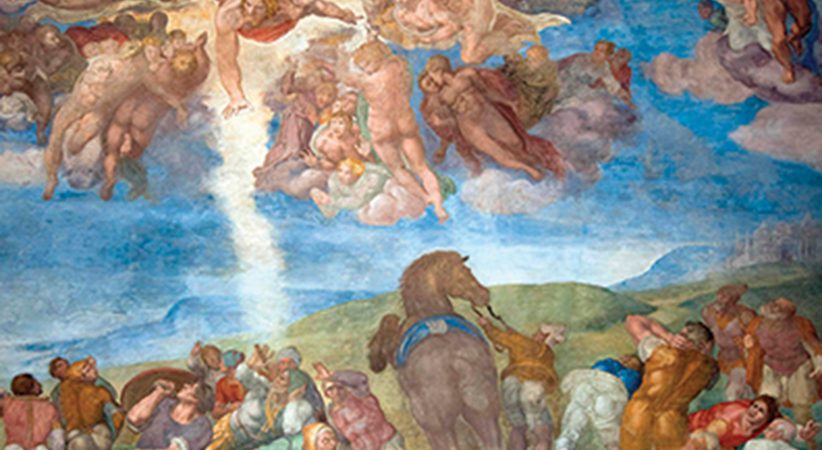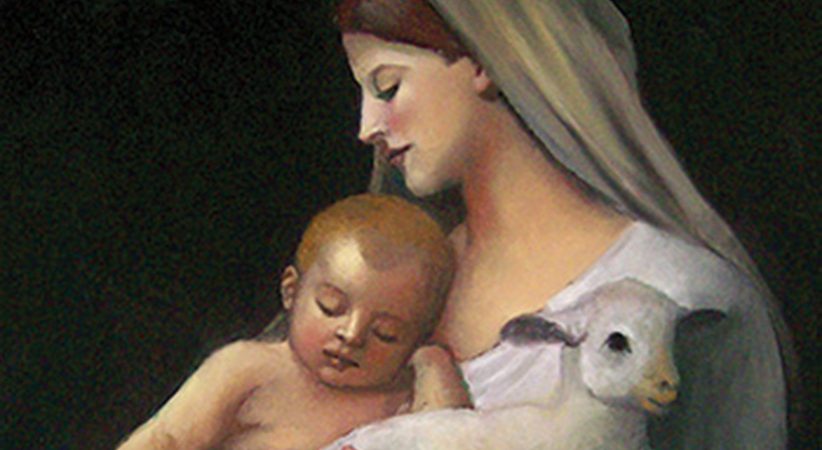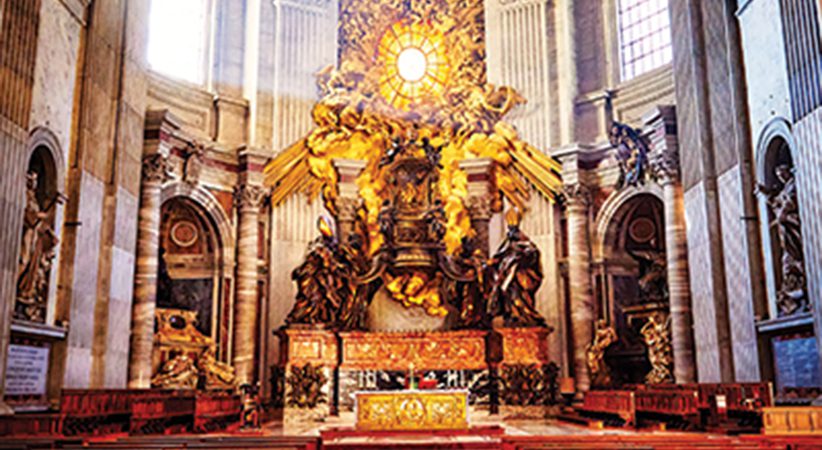Praying for the Faithful Departed
Our responsibility to remember those who have died — both known and unknown
D.D. Emmons Comments Off on Praying for the Faithful Departed
When World War I ended in 1918, over 116,000 U.S. military members had died in the “war to end all wars.” Of those killed, some 1,200 were not identified. There was in the United States a movement to honor all who had given their lives, and especially the unidentified. While military cemeteries were soon erected in the United States and overseas as a final resting place for these dead soldiers, sailors, marines and airmen, not everyone was enthusiastic about singular national recognition for the unknown.
Any reluctance soon faltered as other countries began to acknowledge their unknown in special ways. In 1921, the U.S. Congress authorized that the remains of a single unidentified WWI American soldier be brought back from Europe and given special acclaim including burial with honors at Arlington National Cemetery. This one soldier would represent all the unidentified military members who died in combat during WWI.
On Nov. 9, 1921, the remains of that unknown soldier lay in state in the U.S. Capitol where over 90,000 citizens came to pay their respects. Two days later, on Armistice Day — now, Veterans Day — a procession to and burial at Arlington National Cemetery took place with President Warren G. Harding officiating. November 2021 marks 100 years since that special ceremony.
The original tomb was marked by a simple marble slab, but on Nov. 11, 1932, the iconic tomb sarcophagus that stands today was dedicated. It is 13 feet long, 8 feet wide and 11 feet high. Inscribed on the western facade of the tomb are the words, “Here rests in honored glory an American soldier known but to God.” On the eastern side are three representative figures: Peace, holding a dove; Victory, a palm branch; Valor, a sword. The north and south sides of the tomb have three inverted wreaths, indicating mourning and the six major U.S. campaigns of WWI. The Tomb of the Unknown, guarded 24/7, is the focal point of Arlington National Cemetery, which contains more than 400,000 grave markers; it is also a reminder of the unknown military members resting around the world. Those here are connected to their fallen comrades that remained behind.
To honor the fallen in World War II and the Korean War, two more unidentified military members were buried in the Tomb of the Unknown in 1958. Another unknown from the Vietnam War was buried there in 1984, but the remains were eventually identified and the body was moved to another U.S. military cemetery. It is unlikely that, because of DNA technology, there will ever again be any deceased combatant that cannot be identified.
……………………………………………………………………………………………………………………………………………………..
Remains of U.S. Chaplain Identified
The Department of Defense identified the remains of U.S. Army chaplain and Catholic priest Emil J. Kapaun. He was among the unknown Korean War soldiers buried at the National Memorial Cemetery of the Pacific in Hawaii. The remains were found on March 5, 2021. While a prisoner of war at a camp in China, he ministered to the ill. He died on May 23, 1951. The Cause of canonization opened in 1993, and he is now a Servant of God.
…………………………………………………………………………………………………………………………………………………….
Remembrances
Sometimes we blur Memorial Day and Veterans Day, but not in a bad way. Memorial Day, originating soon after the Civil War, is dedicated to all those who gave their lives in the wars of our country; Veterans Day was established for all who served our nation, living and deceased. On both days, the Tomb of the Unknown has been the place where, on repeated occasions, these heroes have been rightfully honored.
On these holidays, Americans pause and in a special way pray for the souls of all our deceased military veterans. At every opportunity, we also express gratitude to any living veteran we meet with the simple but sincere, “Thank you for your service.”
Visiting a military cemetery is always an awesome and sobering experience. At such places of honor, we are among thousands of veterans who gave or were willing to give their lives for America. Many years ago, I visited the American cemetery at Lorraine, France. Lorraine is the largest WWII cemetery in Europe, the resting place for over 10,000 U.S. military members who died defending our nation.
As far as I could see, panning out to my left and right were those small white markers identifying the resting spot of the fallen soldiers, individuals who sacrificed their life for our way of life, our freedoms, our right to worship. What I remember most was the silence of the surroundings — not a sound, yet the presence of angels keeping watch over this hallowed ground was unmistakable.
There was (is) an indescribable sacredness to the place. Like visiting any cemetery, it’s impossible not to think that all here had once lived much as we do: they felt the sun, heard the wind, watched a rainstorm, saw the stars, held the hand of a loved one. The one difference is that these 10,000 had their lives cut short by the violence of war and never returned home. Some, like those buried in the Tomb of the Unknown, are known only to God.
Lorraine is one of 25 such cemeteries around the world where 130,000 WWI and WWII heroes lie, including thousands who are unknown. As time passes, more and more Americans are unaware of these overseas cemeteries or the heroes resting there. The passage of time should never extinguish the remembrance of the brave men and women who died, in any conflict, for our great nation. The Tomb of the Unknown in Arlington and especially this year’s 100th anniversary helps keep their memory alive.
……………………………………………………………………………………………………………………………………………………
Plenary Indulgence — November Prayers for All Souls
“A plenary indulgence, applicable only to the souls in purgatory, is granted to the faithful who, (1) on any and each day from Nov. 1-8, devoutly visit a cemetery and pray, if only mentally, for the departed; (2) on All Souls’ Day (or, according to the judgment of the ordinary, on the Sunday preceding or following it, or on the solemnity of All Saints), devoutly visit a church or an oratory and recite an Our Father and the Creed” (USCCB, Manual of Indulgences).
Of course, all the other conditions and requirements of a plenary indulgence must be satisfied.
…………………………………………………………………………………………………………………………………………………….
The Catholic Tradition
In the Catholic tradition, during the entire month of November we especially remember all who have gone before us. The celebration of the Mass For the Commemoration of All the Faithful Departed (All Souls’ Day) on Nov. 2 is a long-held and united way for Catholics to offer prayers for the helpless souls in purgatory. Honoring the dead includes visits to a cemetery where we decorate the graves and walk among the souls resting there. Our prayer is that whether we know the person or not, they have been received by our merciful and just God. Some have no one to pray for them, and so we ask God’s divine mercy on them.
When visiting a cemetery between Nov. 1-8, we can gain a plenary indulgence and apply it to shorten or eliminate the time for a poor soul in purgatory (see sidebar). Are our intentions meaningful? Archbishop Blessed Fulton Sheen once proclaimed: “As we enter heaven we will see them, so many coming toward us and thanking us. We will ask who they are, and they will say a poor soul you prayed for in purgatory.”
The Church celebration of All Souls’ Day in November dates back to the 10th century when Abbot St. Odilo (994-1048) of Cluny, France, encouraged the monks on the day after All Saints Day to pray for the monks who had died.
Slowly, commemorating the dead on Nov. 2 spread throughout the Church and was added to the liturgical calendar in the 14th century. During World War I, and because of the terrible destruction of churches, Pope Benedict XV, in his papal bull Incruentum altaris of August 1915, gave priests the privilege of saying three Masses on All Souls’ Day so that Catholics could find a Mass to attend and pray for the faithful departed. This privilege still exists today; the first Mass of the day is for the regularly scheduled intention, the second for all the faithful departed and the third for the intentions of the pope.
D.D. EMMONS writes from Pennsylvania.
…………………………………………………………………………………………………………………………………………………..
2 Maccabees — Praying for the Dead
The charitable act of praying for the dead goes back to at least 164 B.C. In the Old Testament, the Second Book of Maccabees describes Judas Maccabeus, the Jewish Army commander, directing his men to pray for their fallen comrades.
After a victorious battle, the Jewish army discovered that some of their members killed in battle were wearing idolatrous items. Judas and his men prayed and offered alms that the sins of those killed be forgiven: “In doing this he [Judas] acted in a very excellent and noble way, inasmuch as he had the resurrection in mind; for if he were not expecting the fallen to rise again, it would have been superfluous and foolish to pray for the dead. But if he did this with a view to the splendid reward that awaits those who had gone to rest in godliness, it was a holy and pious thought. Thus he made atonement for the dead that they might be absolved from their sin” (12:43-46).
……………………………………………………………………………………………………………………………………………………





